The idea of luxury streetwear in 2022 isn’t a novel concept. It’s what many sneakerheads have come to expect. Even demand. We’re far from the days when sneakers were just simple canvas or leather trainers with paper-thin midsoles. These days, it’s not totally out of the ordinary to rock kicks made from finely sourced materials, featuring expert detailing, and the sort of craft usually reserved for high-end luxury labels, totally alien to the practical function-focused world of sneakers.
Big sneaker brands like Nike and Adidas regularly team up with luxury labels like Dior, Louis Vuitton, and Balenciaga to produce sneakers that fetch jaw-dropping prices. Outside of those direct brand collaborations, sneakers like the Jordan XI Concord, Nike Air Fear of God, and the Yeezy 750 have luxury built right into their designs. But it wasn’t always like this, it was the Air Jordan II that paved the way for the luxury-sneaker era. And now, 36 years after its release, the underrated silhouette is finally getting the recognition it deserves.
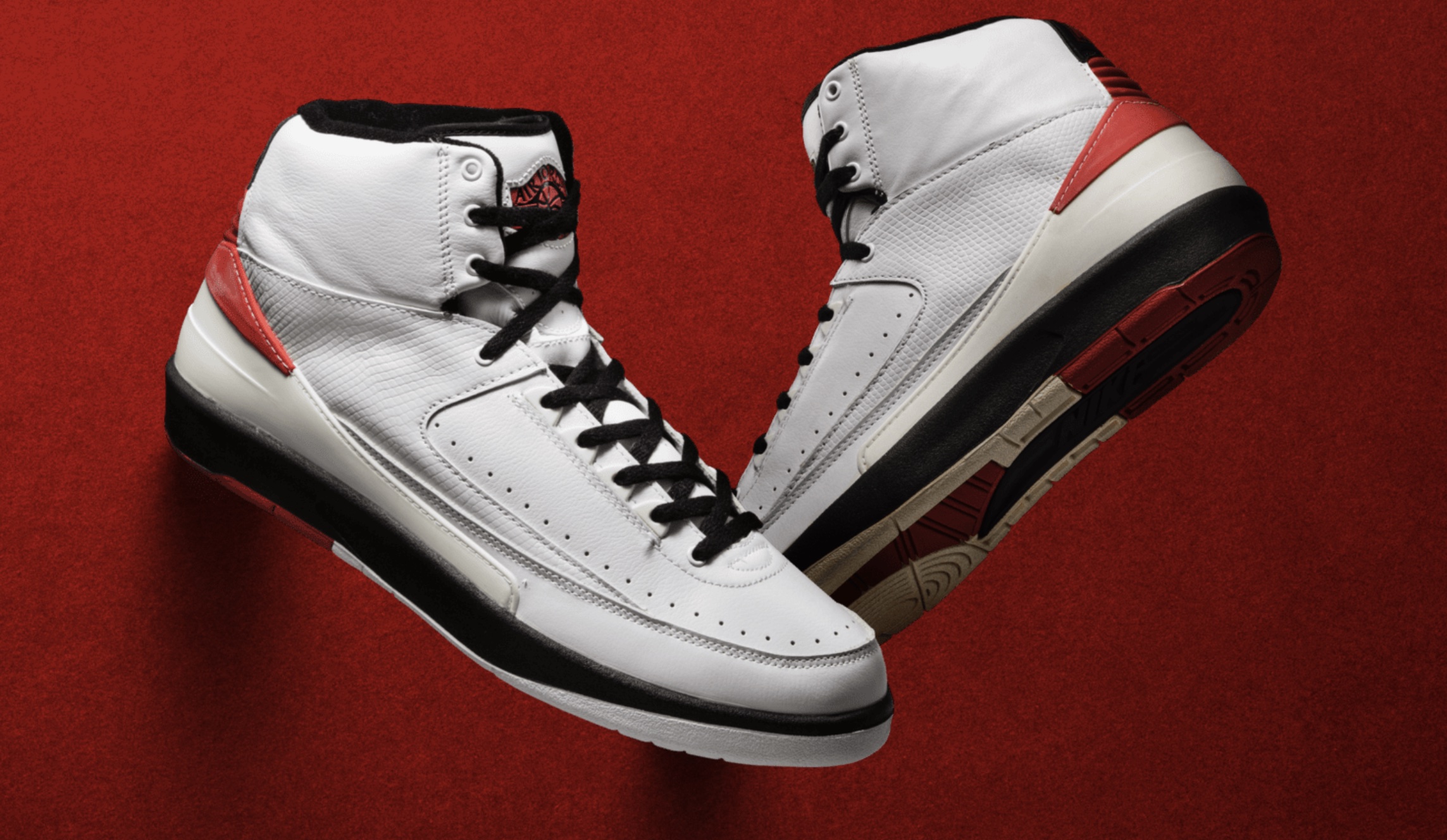
With a string of releases that began with last year’s Off-White Air Jordan II, designed by the late great Virgil Abloh (though Don C gets some credit here for his beautiful 2016 collection of quilted leather Jordan IIs, which we don’t doubt caught Virgil’s eye), the Air Jordan II has been getting noteworthy collaboration after collaboration, resulting in the best run of designs the silhouette has ever enjoyed. But how did it take this long for the II to finally resonate?
For that, let’s turn back the pages of history.
PART I — A Brief History
German designer Jil Sander is largely credited with being the first person to combine the world of high-end fashion and sportswear with her 1998 PUMA collaboration, the PUMA King Football Cleat — opening the door for other designers from the luxury realm to quickly follow suit. Since then, the worlds of luxury fashion and streetwear have continued to merge year after year, probably best exemplified by Virgil Abloh, a designer who solidified his name as a streetwear icon when he reimagined 10 classic Nike silhouettes, capturing the imagination of the entire fashion industry in the process and later taking on the role of creative director of men’s fashion at Louis Vuitton.
While the Jil Sander’s PUMA collaboration is the first big successful team-up between a luxury brand and a sportswear icon, it wasn’t the first time someone thought to merge the two worlds together. Over a decade before Sander’s partnership with PUMA, Nike designers Peter Moore and Bruce Kilgore, along with Michael Jordan came together to give us the Air Jordan II, a first-of-its-kind luxury sneaker that was so ahead of its time that it never really caught on and ended up being buried under the popularity of the classic designs that predated and proceeded it. Moore would leave Nike in 1987 to establish his own brand in partnership with DC shoe retailer Mark Van Grack dubbed VanGrack, and almost stole Jordan from Nike in the process.
“I was honest with him to a fault,” Moore said to Uproxx about Jordan shortly before his death. “I told him, you can get richer owning your own company but we’re not going to beat your [Nike] endorsement overnight. It’s going to take some time. In the end, he got ownership and the upfront cash.”
Ultimately, Jordan stayed with the Swoosh when he saw the design of the Jordan III with its futuristic aesthetic and embroidered Jumpman logo. The logo, one of Jordan’s favorite aspects of the III, was designed by Peter Moore.
The design team for the AJ II, besides being attached to one of the greatest players in the game, was made up of sneaker legends. The trio of Moore, Kilgore, and Jordan was truly an All-Star trio. Moore was the designer behind the Air Jordan 1, as well as the iconic Wings logo and the Nike Dunk, and Kilgore gave the world the Air Force 1 — so it’s kind of astounding how little of a thing people make about this sneaker. It’s like ignoring a post-Beatles McCartney/Lennon team-up, it combines the genius of two masters of their craft to create something that was, at the time, genre-defying.
PART II — The Design

The concept of the Air Jordan II was simple, Jordan wanted a sneaker flexible enough to work both on the court and when he was luxuriating at the golf club, a combination of sports functionality and luxury Italian dress shoes, and the II is just that. At certain angles, the way the design lines split the midsole, it almost looks like this sneaker is rocking a heel!
Released in 1987, the Air Jordan II was originally marketed as the Air Jordan Imagination, according to Sole Savy, and featured a premium leather upper, faux iguana skin detailing, and a full-length air unit underfoot for increased comfort.
But that luxury take on the sneaker came with a price, $100 to be exact according to High Snobiety, which was $35 dollars more than the Air Jordan I (what a time to be alive) and was at the time a very high amount of money for a basketball shoe. In addition to the high price tag, the sneakers weren’t very easy to get a hold of. The initial run was crafted in Italy and limited to just 30 stores spread across 19 metropolitan areas — adding a level of exclusivity to the sneaker that at the time was unheard of and has now, for better or worse, become the norm.
Ultimately, that lack of easy accessibility may be the reason the Air Jordan I continued to be so popular amongst the earliest sneakerheads and young Jordan fans passed over its more premium successor, the Air Jordan II. Fitting with their broader theme, Kilgore and Moore made the decision to ditch the iconic Swoosh branding, making Jordan himself the centerpiece of the brand. In 1986 the Jumpman Logo wasn’t a thing yet, but you can see how some of Moore’s influence and ideas eventually made it to Tinker Hatfield’s Jordan III design. This distinction between Jordan and Nike, and seeing Jordan as a brand in and of itself, made an impact on young sneakerheads.
“I remember watching clips of Jordan playing as a kid and he was wearing Jordan 2s… I always thought Jordan Is was just Nike, but the Jordan II was the signature shoe that defined the Jordan brand, in my opinion,” artist and sneaker influencer Lee Brown tells Uproxx. “It gave the message that it wasn’t just Nike. It paved the way for athletes to have signature shoes.”
The Jordan II was far from the first signature shoe but it was the first time a brand viewed the attached athlete as bigger than the brand itself. Aside from the luxury design and experimental branding, the Jordan II also brought innovation to the court. Responding to an on-court injury suffered by Jordan, Kilgore and Moore wanted the II to provide better cushioning and support so they revamped the sole with a full-length air unit.
This started a trend of each subsequent Jordan responding to the needs of the player and it helped the design to hold up past its prime.
“For me, the Jordan II is special because it was the first signature Jordan that I ever owned,” says sneaker photographer Andy Dutton. “I grew up in a semi-rural place so all of the exposure I had to Jordan models and other cool shoes was TV… I saw a few pairs of Jordan XIs and Jordan Vs playing basketball in high school, but didn’t know how to get them. Then one day I walked into my small local mall and sitting on the shelf at the Footlocker were two pairs of Jordan 2s, an all-white low and black and silver high. I played my senior year basketball season in those shoes. Ever since then, I’ve had a special love for the Jordan II.”
When asked how the shoe performed, Dutton says:
“I felt they performed incredibly well for how old the model was. It was ahead of its time with the full-length air unit, which definitely helped with cushioning. Would I play in them today? Probably not.”
Ultimately, at the time of its release, the Air Jordan II was a commercial failure and according to Nice Kicks, wasn’t well-loved by Jordan himself — despite a strong season where Jordan won his first Slam Dunk Championship while rocking the IIs, and made the All-NBA First Team for the first time in his career. Jordan’s preference for the design of the original Air Jordan I explains the creation of the Air Jordan 1.5, a rare sneaker that combines the look of the I with the feel of the II.
PART III — The Comeback & Future
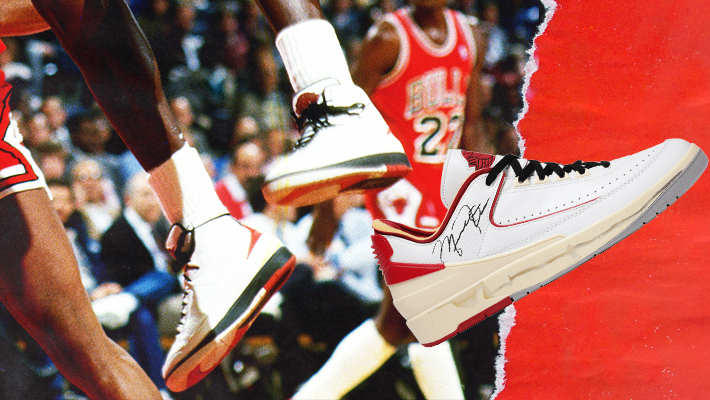
For years Nike and the brands and designers they frequently collaborate with had been ignoring the Air Jordan II until Virgil Abloh dropped his Off-White rendition in 2021 which combined Abloh’s deconstructionist aesthetic with the luxury design of the original and served as a celebration of the history of the sneaker. Abloh’s concept was to play on Jordan’s practice of signing pairs of sneakers and giving them away to young fans after games, so he pulled an actual pair of Jordan IIs from the Nike archives, lifted Jordan’s signature as well as the detail of the cracked and aged midsole and recreated it on a two colorway set.
Like Jil Sanders opened the door for luxury brands to combine with streetwear staples, Abloh’s Off-White Jordan II opened the door for other artists and brands to take a stab at the underappreciated design.
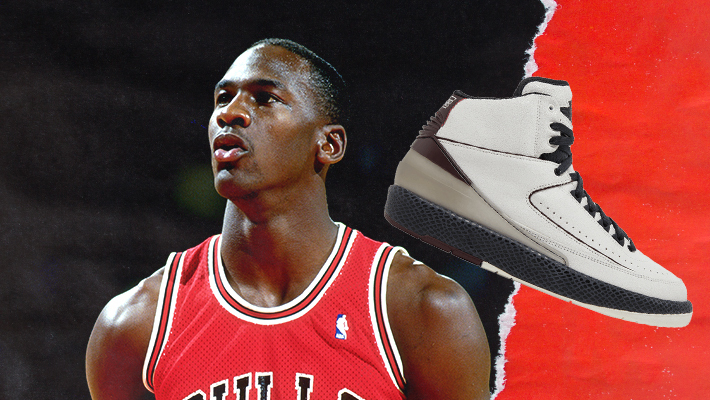
Abloh’s influence has culminated in a flood of new designs this year, marking 2022 as easily the silhouette’s best year.
In 2022 we have seen new Jordan IIs from American artist Nina Chanel Abney, beloved streetwear label Union LA, the Paris fashion label Maison Château Rouge, and perhaps one of the best brands to consistently drop amazing Jordan collaborations, Atlanta-based A Ma Maniére.
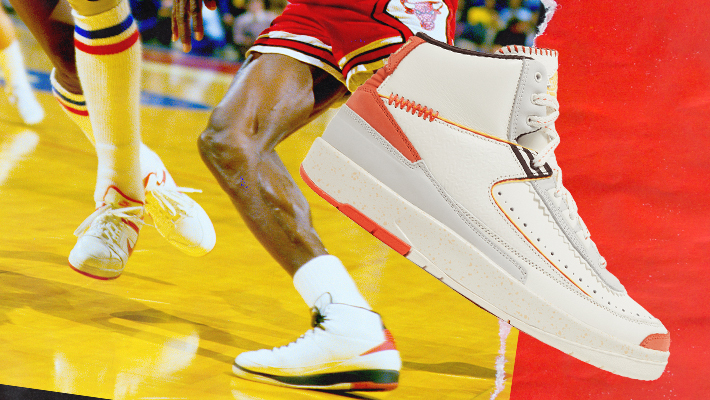
In 2021 GQ wrote an article titled, “Can Virgil Abloh Make the Air Jordan 2 Cool?” This year alone proves that the answer is a definitive “yes!” And now even Nike itself is putting some respect on the Jordan II name with the recent decision to retro the original Jordan II colorway for the first time in 12 years.
Even celebrity sneakerheads are starting to take notice, J Balvin’s next sneaker with Nike will be a cloud-adorned Air Jordan II, which will likely prove to be one of the best sneaker collaborations of the year. Period.
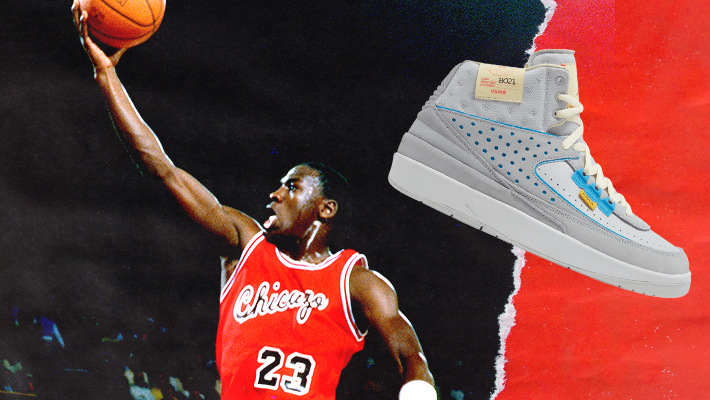
Sneaker influencer, writer, and creative, Anna Bediones, speaking on the renewed popularity of the silhouette and why it failed to initially connect with audiences the way other early Jordans did says:
“I love the idea of combining luxury with sportswear. While it’s definitely more prominent now it’s not a new concept… but I imagine it was just before its time. I think the ’90s and 2000s were more accessible in fashion and sneakers, whereas today fashion is a lot more aspirational which adds to its popularity within the mainstream but also alienates a lot of people, including sneaker enthusiasts.”
In the late ’80s, before people were willing to drop some serious money on sneakers, that heftier price tag might’ve proven too great a hurdle to pass for early sneakerheads who were, unlike Jordan, just looking for sneakers to ball in, not fancy expensive Italian dress shoes. But like Bediones points out, fashion is a lot more aspirational these days — sneakerheads seek out luxury and no other Jordan combines luxury with the look and feel of classic basketball sneakers quite like the Air Jordan II.
The Air Jordan II might not have the on-court advantage it once had, but the sneaker will forever stand as a design that not only pushed the Jordan brand forward but elevated the entire look and feel of sneakers. Even if it took a few years decades for people to fully see the vision.

